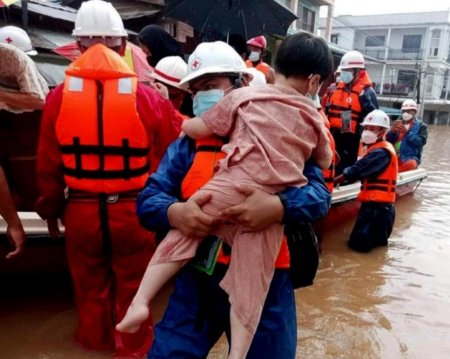
According to the latest update from DMH, monsoon flooding has hit the lower part of Myanmar following heavy rainfall since the third week of July. The flood has been affecting thousands of households in Shan (East), Kayin, Mon, Rakhine, Mandalay and Tanintharyi. The Department of Meteorology and Hydrology (DMH) Myanmar reported that the lowpressure area over the North Bay of Bengal persists and will remain until October 2021.
Since, 30 June 2021, the DMH has been issuing flood advisory warnings and warnings regarding weather systems impacting major rivers and their water level. As weather systems come closer and more information on the expected impact becomes available, public warnings on flooding and landslides are being disseminated. Myanmar’s DMH have reported heavy rain since 25 July 2021, with many areas affected by flood. Since mid-July, people and communities have been impacted by ongoing and recurring floods across Myanmar which requires local level response.
The monsoon weather system is strong and active, and on 24 August, DMH forecast predicted water levels may exceed the danger level of major rivers and river dams such as Ayeyarwady River and Sittoung River that are currently in critical situation and could have the ability to impact the most at-risk areas. As of 25 August, the Thanlwin River has exceeded the danger zone (see in Annex forecast).1 There are concerns that the weather system, fluvial floods, and flash floods could cause damage in communities across several regions, particularly in Shan (East), Kayin, Mon, Rakhine,
Tanintharyi, Magway, Mandalay, Kachin, Sagaing and Chin regions. Some of these areas have experienced previous devastation by the flood in 2015 and 2017, with response carried out via operation by IFRC EA MDRMM006. It is estimated more than 1.6 million vulnerable people2 are likely to be impacted by sessional monsoon related disasters.
In addition, Myanmar’s coastline is susceptible to severe cyclones which form in the Bay of Bengal, which has two cyclone seasons: April to May and October to November. Considering this, it is crucial to support MRCS in its capacity to respond timely and effectively to concurrent disasters.
Source: IFRC







